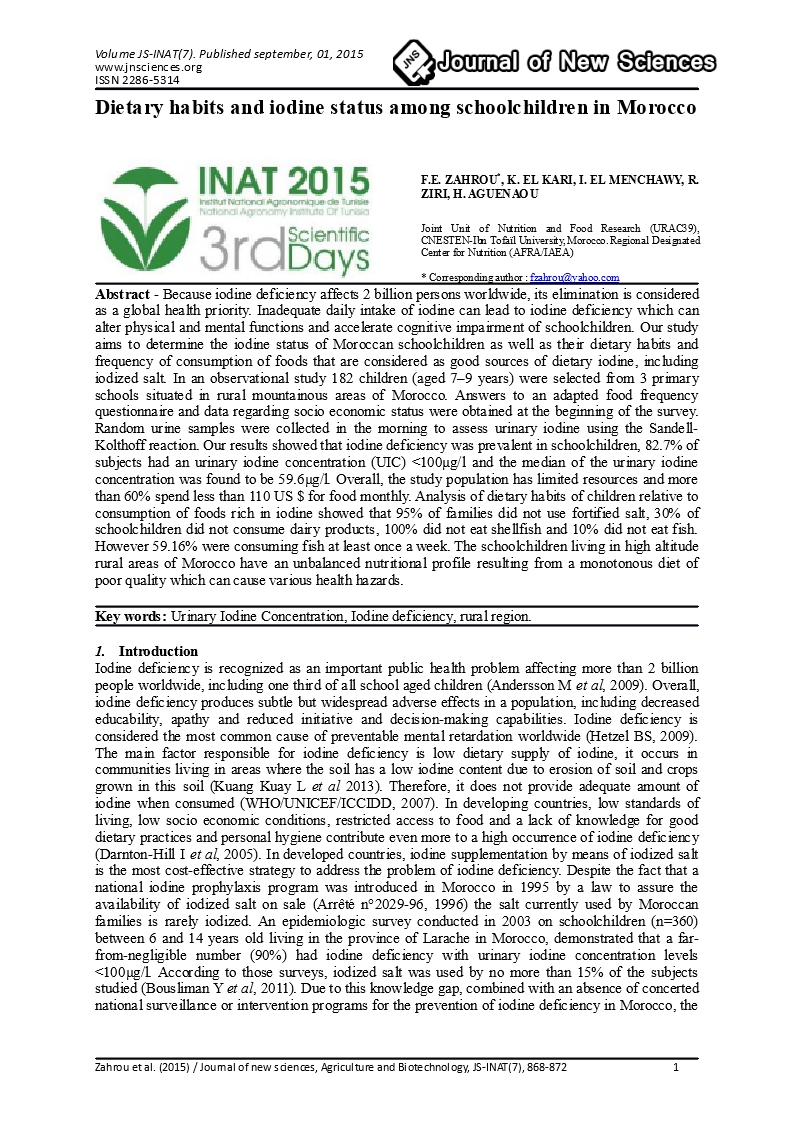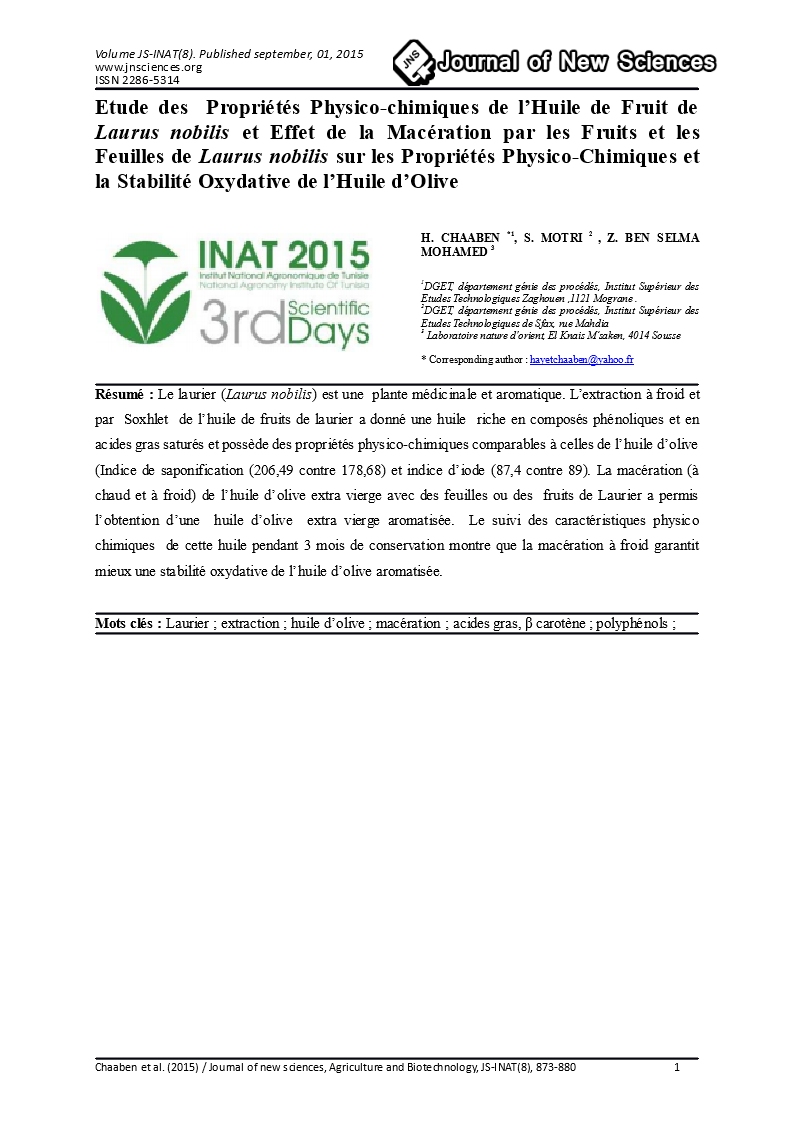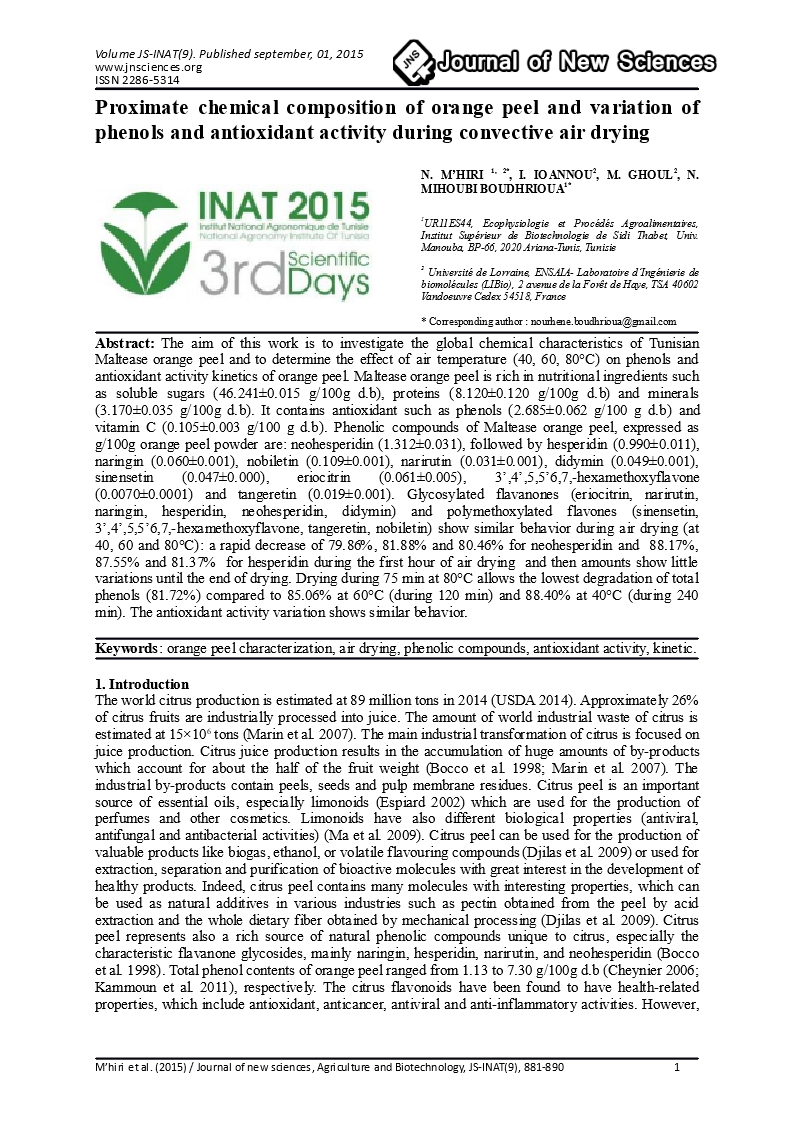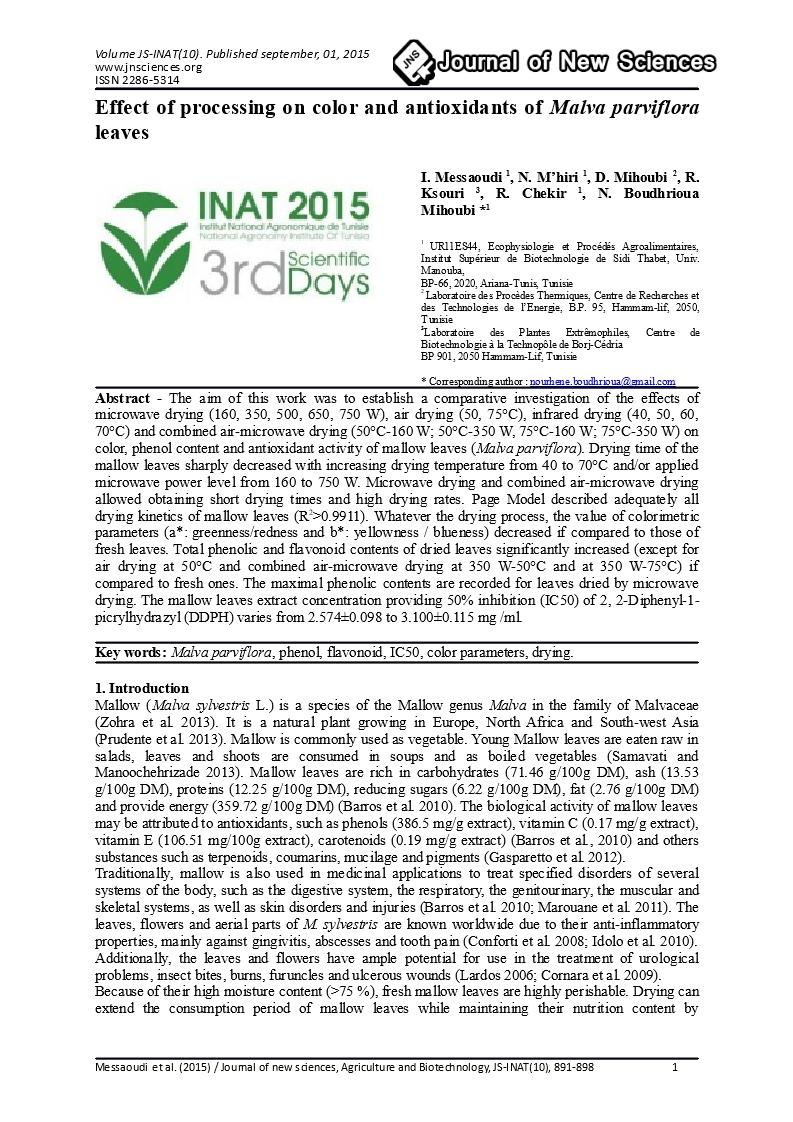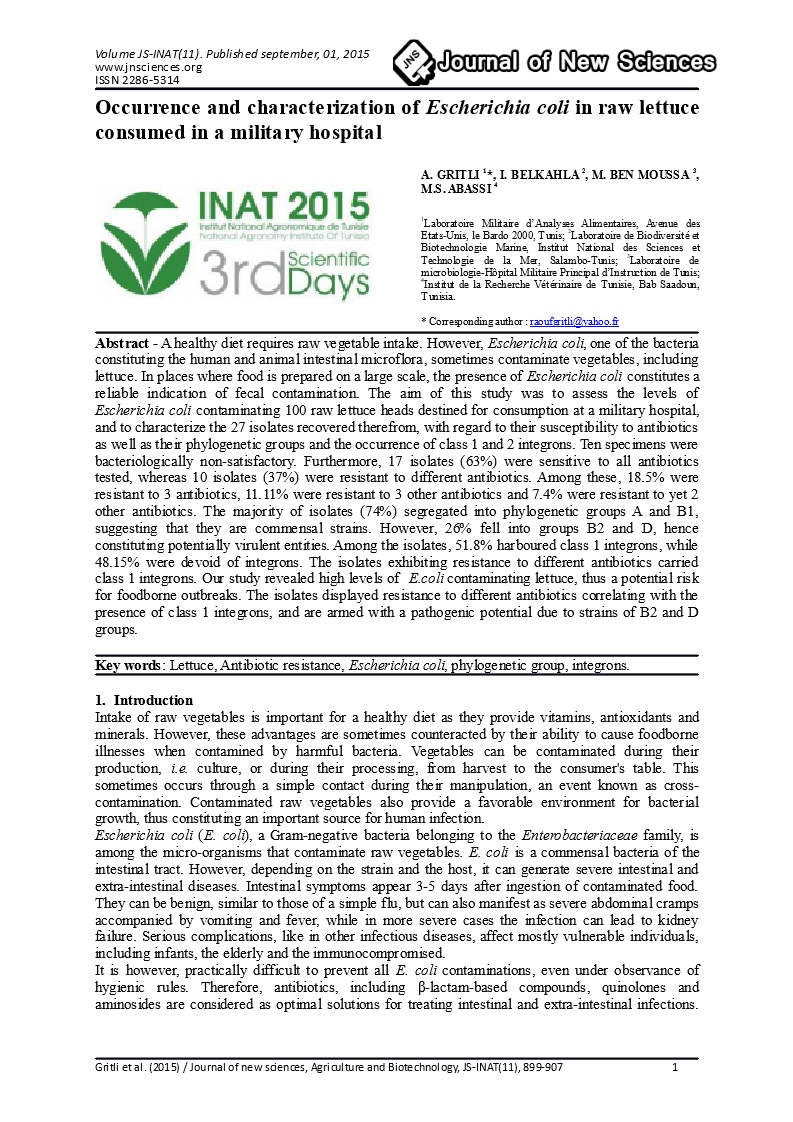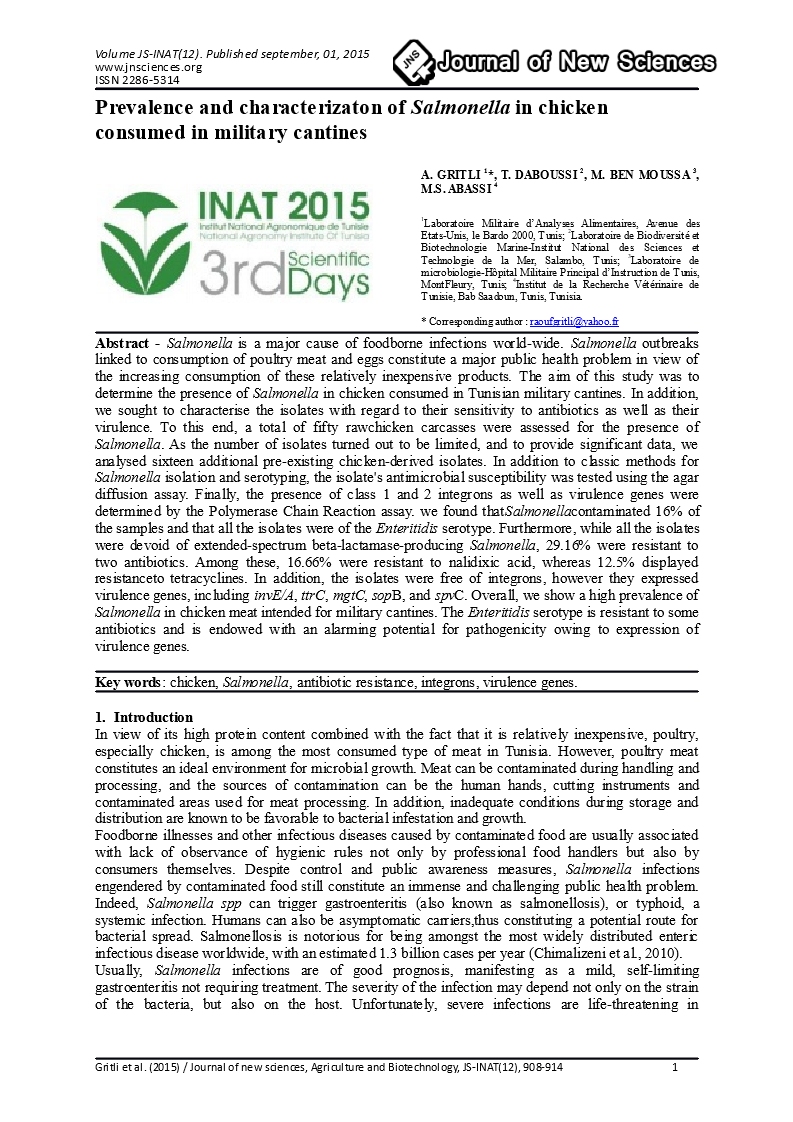- Category: Volume Spécial (Journées Scientifiques de l'INAT)
- Hits: 5619
Experimental and theoretical investigation of drying behavior of garlic in infrared dryer
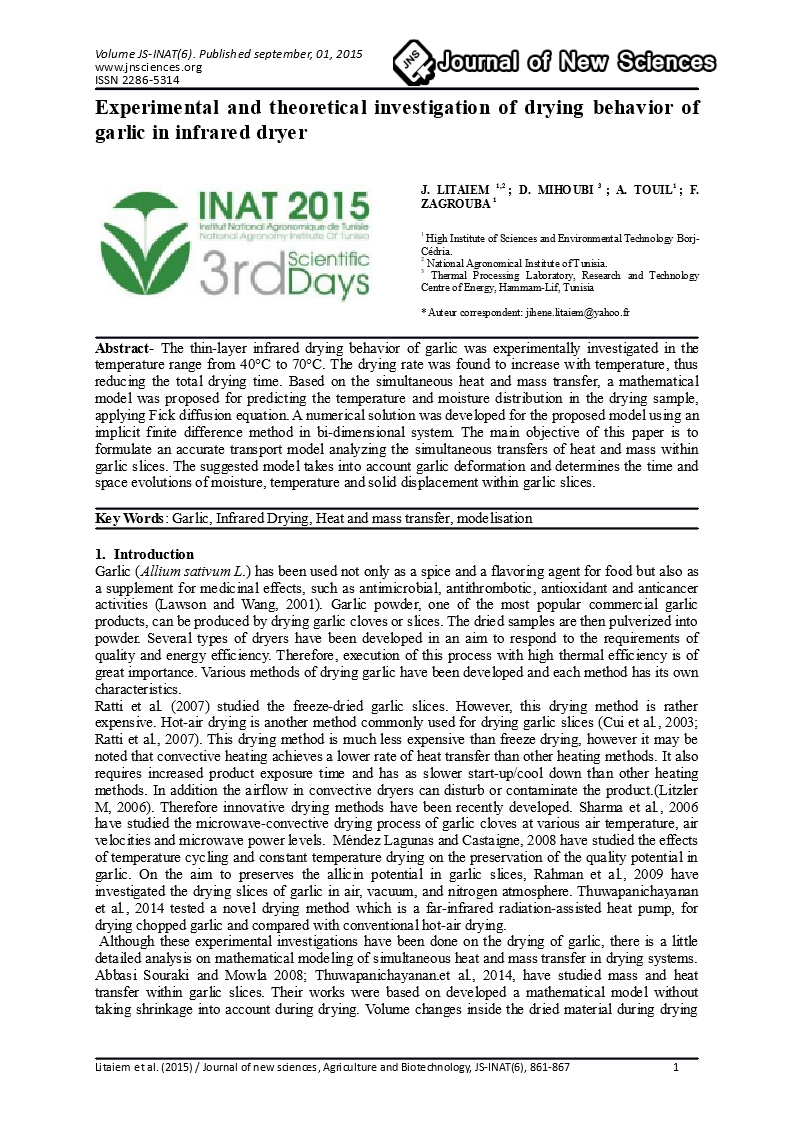
J. Litaiem 1,2
D. Mihoubi 3
A. Touil1
F. Zagrouba 1
1 High Institute of Sciences and Environmental Technology Borj-Cédria.
2 National Agronomical Institute of Tunisia.
3 Thermal Processing Laboratory, Research and Technology Centre of Energy, Hammam-Lif, Tunisia
Abstract- The thin-layer infrared drying behavior of garlic was experimentally investigated in the temperature range from 40°C to 70°C. The drying rate was found to increase with temperature, thus reducing the total drying time. Based on the simultaneous heat and mass transfer, a mathematical model was proposed for predicting the temperature and moisture distribution in the drying sample, applying Fick diffusion equation. A numerical solution was developed for the proposed model using an implicit finite difference method in bi-dimensional system. The main objective of this paper is to formulate an accurate transport model analyzing the simultaneous transfers of heat and mass within garlic slices. The suggested model takes into account garlic deformation and determines the time and space evolutions of moisture, temperature and solid displacement within garlic slices.
Key Words: Garlic, Infrared Drying, Heat and mass transfer, modelisation

